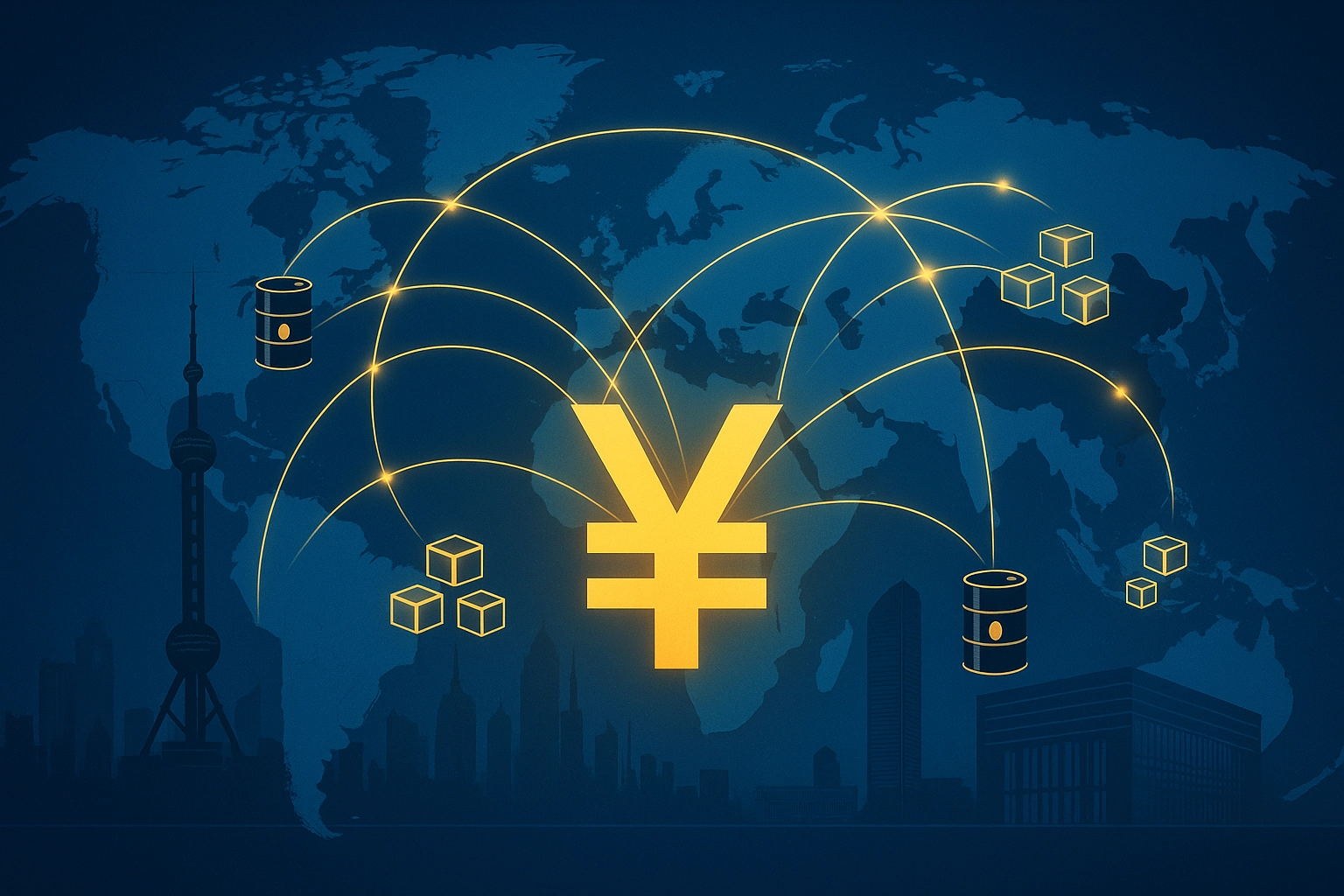
BRICS Bloc Advances New Financial Path
Could a coalition of emerging economies rewrite the rules of global finance? The BRICS bloc – Brazil, Russia, India, China, and South Africa (now expanded with new members) – is moving closer to that reality. In a dynamic push for financial autonomy, BRICS leaders are advancing plans to trade in local currencies like China’s yuan and build their own payment networks beyond U.S. control. With roughly 45% of the world’s population and 35% of global GDP (in purchasing power parity) under its umbrella, the alliance is leveraging its economic weight to challenge the decades-long dominance of the US dollar in cross-border commerce.
Key Developments: BRICS’ Financial Autonomy Drive
At the 16th BRICS summit in Kazan, Russia in October 2024, the bloc unveiled major steps to bolster financial cooperation and independence. A flagship project was the BRICS Cross-Border Payment Initiative (BCBPI) proposed by Russia (the 2024 chair), enabling members to trade directly in their national currencies. This includes developing an alternative interbank messaging system to bypass SWIFT – the Western-controlled network for global bank transfers – thereby insulating BRICS transactions from U.S. oversight or sanctions. In parallel, the summit spotlighted the BRICS Pay digital platform as a transformative tool: a blockchain-based payments system allowing member countries to transact without converting into U.S. dollars. By utilizing tokenized funds and distributed ledger technology, BRICS Pay promises faster, cheaper settlements while effectively circumventing SWIFT. These initiatives coincided with the bloc’s expansion in 2024 to include Egypt, Ethiopia, Iran, and the United Arab Emirates, extending BRICS’ reach across Africa and the Middle East. Collectively, the moves signal a concerted effort to shift the global financial balance toward a more multipolar system, reducing dependency on the dollar-centric infrastructure that has long underpinned international trade.
Political Impact: Reshaping Alliances and Influence
Politically, the BRICS financial push is strengthening an emerging narrative of South-South solidarity and independence from Western hegemony. At the Kazan summit, Russian President Vladimir Putin demonstrated he is far from isolated on the world stage. Despite Western sanctions and the Ukraine war, Putin engaged with fellow leaders who continue to maintain ties with Moscow. Notably, the BRICS forum even facilitated a rare dialogue between China’s Xi Jinping and India’s Narendra Modi – their first in-person meeting in five years – under Russia’s mediation. This highlighted BRICS’ role as a platform for diplomacy, bridging divides among major emerging powers that do not always see eye to eye.
Many developing nations view U.S. sanctions and the dollar-based system as tools of geopolitical coercion. By creating alternative payment channels, countries like Iran and Russia gain a lifeline to conduct commerce without Washington’s reach. Indeed, the ability to bypass the U.S.-controlled SWIFT network offers a form of financial sovereignty for nations under Western pressure. However, BRICS is careful to frame these steps as diversification rather than direct confrontation. Key members such as India, Brazil, and South Africa have balanced ties with the West and are cautious not to sever them. They prefer to use BRICS initiatives to augment their options – trading more in local currencies, for instance – without completely abandoning the dollar.
Still, the growing cohesion of the BRICS bloc is amplifying a collective political voice for the Global South. Over 30 countries have expressed interest in affiliating with BRICS or its new “partner” status, attracted by the promise of a more equitable international order. Western powers are watching warily. Any state that moves too close to the Sino-Russian financial orbit risks heightened scrutiny or even punitive measures from the U.S. and its allies. Analysts predict an incoming wave of U.S. trade protection and sanctions – for example, higher tariffs to “protect” the dollar’s dominance – as Washington seeks to dissuade countries from joining alternative systems. This geopolitical tug-of-war underscores how intimately finance and politics are intertwined: BRICS’ monetary maneuvers are redrawing alliances and could potentially weaken the influence of the G7-led Western bloc in global decision-making.
Economic Impact: Markets Brace for a Currency Shift
Economically, the shift toward local-currency payments carries both opportunities and challenges across markets. On one hand, businesses in BRICS countries stand to save billions by sidestepping currency conversion fees and dollar exchange risks. A new payments ecosystem could lower transaction costs and spur trade among emerging economies. For example, China’s digital yuan has already demonstrated dramatic efficiency gains – settling international payments in just seven seconds and cutting fees by 98% compared to traditional SWIFT transfers. Such technology was used recently when Thailand executed its first oil trade priced in digital yuan, showcasing how commodity transactions can happen outside the dollar system. If major oil exporters like Saudi Arabia (which is considering BRICS membership) begin pricing even a share of their oil sales in non-dollar currencies, it would mark a significant crack in the decades-old “petrodollar” regime. The mere prospect of BRICS countries representing 42% of global oil supply trading in alternative currencies has prompted energy markets to contemplate a shift in pricing norms over the long term.
At the same time, new winners are emerging in the corporate world. Firms at the forefront of fintech and financial infrastructure – for instance, Chinese tech giants like Ant Group and Huawei – stand to benefit from the expansion of yuan-based payment networks. These companies are developing blockchain platforms, digital wallets, and secure telecom networks to support systems like BRICS Pay and China’s CIPS (Cross-Border Interbank Payment System). Shanghai, China’s financial hub, is already reaping the benefits of this pivot. In 2024, Shanghai’s cross-border RMB (yuan) transactions surged to nearly ¥29.8 trillion (about $4.1 trillion), up 30% year-on-year, accounting for roughly 47% of China’s total cross-border yuan payments. This boom underscores Shanghai’s rising stature as an international financial center at the heart of yuan internationalization. Beijing is actively reinforcing that status – China’s central bank has pledged to accelerate Shanghai’s development as a global financial hub while expanding offshore use of the RMB. By the end of 2024 the yuan had climbed to become the fourth most used currency in global payments and the third in global trade finance by value, reflecting steady progress in its international adoption.
However, the road to a new financial order is far from smooth. The U.S. dollar still underpins about 88% of global forex transactions and the majority of international loans, giving it an inertia that won’t be displaced overnight. Even within BRICS, central banks hold significant dollar reserves and some trade (especially with Western partners) continues to be dollar-denominated for convenience and stability. There are valid concerns about trust and stability in using emerging-market currencies for global trade – issues like exchange rate volatility, capital controls, and liquidity can deter wider acceptance. “De-dollarization” thus remains a gradual process. As one skeptic noted, it may be tough for BRICS to fully abandon the dollar or agree on a single alternative currency given the members’ divergent national interests and security concerns. Moreover, Western financial institutions are not standing still. Global banks and payment processors from the U.S. and Europe, which have long dominated cross-border transactions, are adapting by expanding services in BRICS markets or investing in fintech themselves. Some Western banks, however, now find their direct access to big BRICS economies curtailed due to geopolitical rifts – an economic side effect of the East-West decoupling. In the long run, a more multipolar currency system could inject competition and innovation into financial services, benefiting consumers and businesses with more choices. But in the interim, companies and investors will need to navigate a dual reality: the dollar-centric system still firmly in place, and a nascent BRICS-led network steadily gaining ground.
Quick Insights
- New Payment Networks: BRICS nations are building cross-border payment systems in their own currencies, aiming to bypass the U.S.-led SWIFT network and reduce reliance on the dollar.
- Yuan on the Rise: China’s yuan is playing a pivotal role – it hit a record 54% of China’s total cross-border transaction volume in late 2024 and facilitated ¥5.8 trillion in trade settlements with ASEAN in 2024 (up 120% from 2021).
- BRICS Scale vs G7: The expanded BRICS bloc now represents about 45% of the world’s population and 35% of global GDP (PPP), eclipsing the G7’s share in population and rivaling its economic clout, which could weaken the G7’s influence over time.
- Dollar Dominance Challenged: While the U.S. dollar still dominates ~88% of global transactions, BRICS initiatives offer developing countries an alternative to Western financial dominance – potentially insulating them from U.S. sanctions and policy shifts.
- Tech-Driven Solutions: The BRICS Pay platform and China’s CIPS use blockchain and digital tech to enable faster, cheaper payments, illustrating how innovation is driving a more decentralized and sanctions-proof financial system for participating nations.
BRICS vs G7: A Global Financial Power Shift
In comparison to the G7 – the club of advanced Western economies – the BRICS approach marks a clear pivot from the status quo. The G7 nations collectively uphold the existing international financial architecture, centered on the U.S. dollar and institutions like the IMF and World Bank. By contrast, BRICS is forging parallel structures to serve its members’ interests without Western oversight. For example, the New Development Bank (sometimes dubbed the “BRICS Bank”) was created as an alternative source of development finance, and now initiatives like the BRICS payment network are intended as alternatives to Western-dominated systems. In pure economic scale, BRICS’ heft is starting to rival that of the G7: in terms of GDP (by purchasing power) the two blocs are in a similar range, and in population BRICS countries far exceed the G7. This doesn’t translate to equal global influence yet – the G7 currencies (dollar, euro, yen, pound) still make up the lion’s share of foreign reserves and international transactions. However, the trendlines are shifting. The U.S. dollar’s share of global foreign exchange reserves has slid to about 58%, the lowest in decades, as countries diversify holdings. BRICS members are at the forefront of that diversification push.
Despite the media narrative of a BRICS-G7 showdown, the reality is interdependence. All BRICS members maintain significant trade and investment ties with G7 economies; China, for instance, counts the U.S. and EU as major export markets, and India has strong links with Western firms. This means neither side can afford a sudden rupture. Any decoupling in the financial realm will likely be gradual and selective. Western officials often downplay the de-dollarization threat, pointing out that no single BRICS currency (not even the yuan) is ready to replace the dollar’s global role, and that the euro and yen are established secondary currencies. Still, the G7 is not ignoring the challenge. There is increased discussion in Western capitals about strengthening economic alliances, updating multilateral rules, and even reforming institutions to give more voice to emerging economies – arguably to dissuade them from creating parallel alternatives. Conversely, there are signs of a hardening stance: in Washington, policymakers have floated measures to protect the dollar’s primacy, from leveraging trade agreements to sanctioning currency manipulation. Under the anticipated foreign policy of the next U.S. administration, experts foresee tougher actions like tariffs and sanctions aimed at countries that pivot too far toward the BRICS camp. In essence, the world may be witnessing the emergence of a dual-track financial order: one dominated by the G7’s established systems and another driven by BRICS and its partners. How these two spheres interact – whether through competition or some form of coexistence – will shape the future of global finance.
What’s Next? A Look Ahead
What’s next on the horizon for BRICS and the global financial landscape? In 2025, Brazil takes over the BRICS presidency and is expected to push for greater cooperation and concrete progress on these initiatives. One focal point will be whether the idea of a common BRICS currency gains traction. So far, members have shown limited appetite to forge a single currency – the hurdles of ceding monetary sovereignty and aligning economic policies are immense. Instead, the emphasis is likely to remain on a multi-currency system: essentially, expanding the use of local currencies in trade and finance among BRICS nations. Russia’s officials have explicitly touted a “multi-currency” framework as a cornerstone of the BRICS financial architecture, and that concept is likely to be refined in upcoming meetings. We may see more bilateral and multilateral arrangements where, say, Brazilian exporters get paid in renminbi or Indian firms in rubles, facilitated by currency swap lines among central banks.
Another area to watch is the integration of digital currencies. China’s rapid advancement with the digital yuan (e-CNY) could inspire other BRICS members to explore central bank digital currencies (CBDCs) for cross-border use. In fact, technical teams are already discussing how platforms like BRICS Pay and China’s CIPS could interface with emerging digital currency systems to make transactions even smoother. It wouldn’t be surprising if in the next few years BRICS launches a pilot for a digital currency basket or a smart-contract-based clearing system for its members. The New Development Bank will also play a key role going forward. The NDB has set a goal to issue about 30% of its loans in local currencies of members, reducing exchange rate risk for borrowing countries. Realizing that goal will involve raising more funding in BRICS capital markets and possibly inviting other countries to contribute capital to the bank. Additionally, BRICS is introducing a new “partner countries” tier to engage interested nations short of full membership. How this is implemented could gradually expand the BRICS sphere of influence to include other Global South economies (such as Indonesia, Nigeria, or others) in select projects, thereby broadening the use of BRICS-led financial mechanisms.
Global investors and institutions will be closely monitoring these developments. An accelerated shift away from the dollar – even a partial one – could impact currency exchange rates, alter foreign investment flows, and prompt adjustments in everything from bond markets to commodity contracts. The change is unlikely to be abrupt; more likely it will occur in incremental steps that, in hindsight, accumulate to something transformative. Each new bilateral trade deal settled in local tender, each uptick in non-dollar reserves, and each infrastructure project financed outside the traditional Western system adds momentum to the trend. For the established powers, the challenge will be to adapt. The IMF and World Bank may need to reform faster to address the needs of emerging economies, lest they lose relevance. The U.S. and Europe might also seek dialogue with BRICS to find common ground – for instance, setting standards for digital currencies or coordinating on global financial stability – to prevent a fracture in the international monetary system.
In summary, the coming years are poised to test whether BRICS can translate its vision of financial independence into lasting institutions and norms. If successful, we could witness the foundation of a new financial order where no single bloc has a monopoly, and where nations have greater choice in how they conduct trade and safeguard their economies. If the efforts falter, it may reinforce the current system’s resilience. Most likely, we will see a world of mixed outcomes: the dollar’s supremacy gradually eroding but not disappearing, and parallel networks growing alongside – occasionally cooperating, occasionally competing with – the established ones. The evolution is underway, and the balance of financial power in the 21st century will hinge on how both the BRICS and G7 navigate this transitional period.
Regional Spotlight: Impact on the Global South
Across the Global South, BRICS’ push for a new financial framework is met with a mix of enthusiasm and caution. Many developing countries in Africa, Asia, and Latin America have chafed under a dollar-centric system that often leaves them at the mercy of U.S. Federal Reserve policy swings and Western banking norms. For these nations, the prospect of alternative payment routes and funding sources is appealing. For instance, Egypt and Ethiopia, two of the newest BRICS members, see participation in the bloc as a way to ease chronic dollar shortages and reduce pressure on their foreign exchange reserves. By conducting trade in currencies like the yuan or rupee, they hope to stabilize their import costs and conserve U.S. dollars for critical needs. Likewise, access to BRICS development funds could offer an alternative to the IMF and World Bank programs, potentially with fewer political strings attached.
Sanctioned countries such as Iran view BRICS as an economic lifeline. Being part of a network not dominated by the West means Iran can pursue trade and investment with major economies like China, Russia, and India without as much fear of financial blockades. This South-South cooperation extends beyond BRICS members. In Southeast Asia, several ASEAN nations have increasingly embraced the Chinese yuan for trade and reserves. In fact, six ASEAN central banks – including those of Malaysia, Singapore, and Indonesia – have added the yuan to their foreign exchange reserves as a hedge, and Malaysia has even publicly endorsed using renminbi for bilateral trade. ASEAN’s cross-border RMB settlement volume exceeded ¥5.8 trillion in 2024, a 120% jump from just a few years prior. Such trends indicate that even countries not formally in BRICS are gravitating toward the financial ecosystems championed by BRICS powers, especially when it aligns with their regional trade interests. In Africa, initiatives like the Belt and Road Initiative (BRI) dovetail with BRICS’ goals: Chinese-financed infrastructure projects increasingly use RMB-denominated contracts, and countries like Kenya or Nigeria have started to transact with China in yuan to mitigate dollar scarcity. South America tells a similar story – Argentina and Brazil struck a deal to settle certain trades in yuan, and countries like Bolivia have signed onto currency swap agreements with China.
Yet, the shift comes with reservations. Smaller economies worry about becoming too dependent on China’s currency and economic orbit even as they seek relief from the dollar’s grip. There’s also internal political calculus. A change in government can redefine a country’s stance toward BRICS or the West. A vivid example is Argentina: it was invited to join BRICS and initially showed interest, but a sudden political shift in late 2023 brought a new administration that pulled back from the BRICS orientation, favoring alignment with the U.S. and IMF instead. This demonstrates that in the Global South, BRICS is not universally seen as the only path forward – it competes with other alliances and ideologies. Additionally, some African and Asian nations emphasize that BRICS must prove it offers more than rhetoric. They seek tangible benefits like fairer loan terms, technology transfers, and investment in local industry. If BRICS can deliver on these fronts, it will solidify support in the Global South. If not, skepticism will grow, and those countries may revert to the established global institutions for want of better options.
Overall, the BRICS initiative offers the Global South something it hasn’t had in a long time: an alternative pole of partnership. Even countries that are not BRICS members can leverage the East-West competition to negotiate better terms for themselves. For example, knowing that China or India could fund a railway or buy their commodities in local currency gives these nations bargaining power when dealing with Western lenders and buyers. It is a delicate balancing act – benefiting from both sides while avoiding over-reliance on either. The next few years will be critical as a testing period. If farmers in Africa can get affordable machinery thanks to yuan loans, or a Southeast Asian exporter can avoid currency crises by trading in a stable regional currency, those successes will speak louder than any summit communiqués. By contrast, if projects falter or new dependencies emerge, the promise of BRICS for the Global South may dim. Right now, optimism cautiously prevails in many quarters of the developing world that a more inclusive and multipolar economic era is dawning – one where their interests carry more weight and they are no longer just rule-takers in the global financial system.



